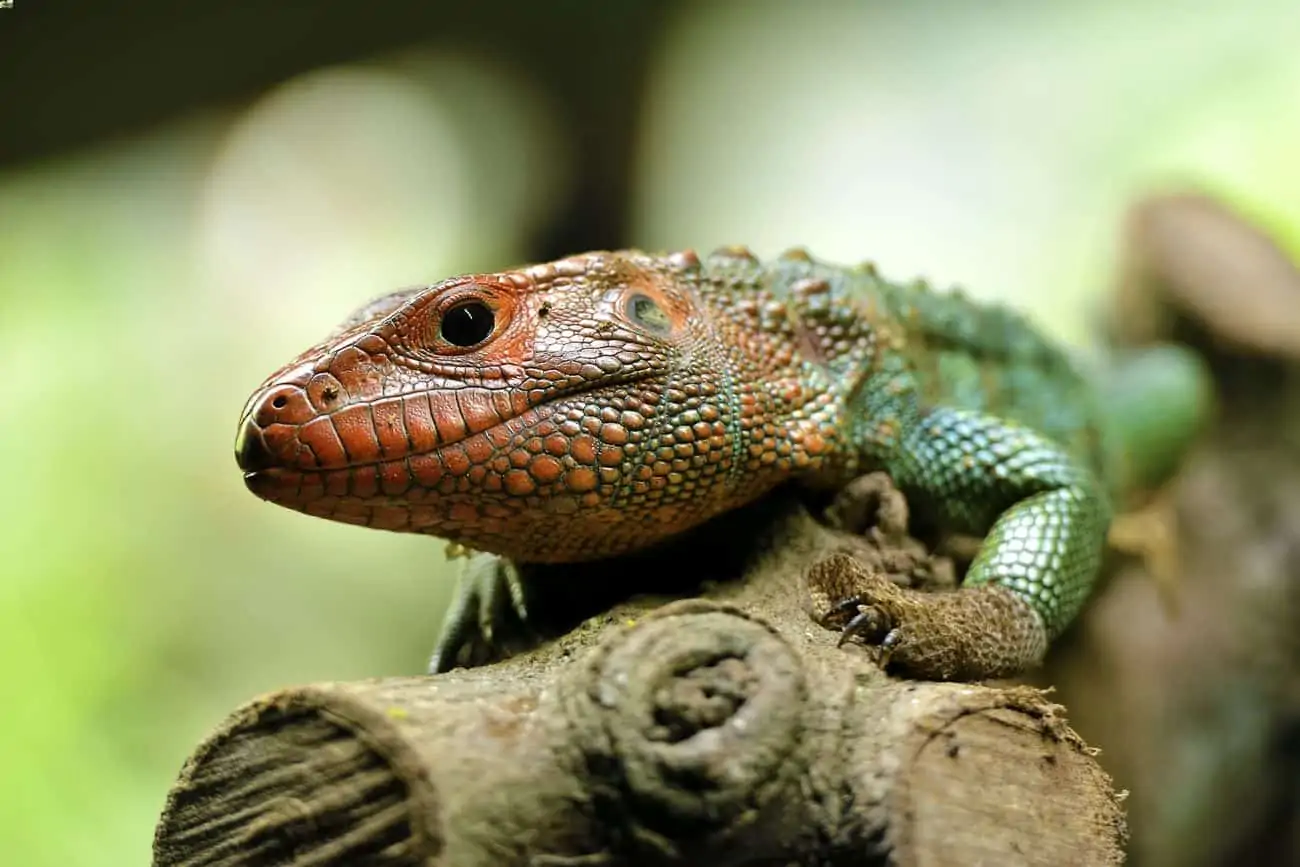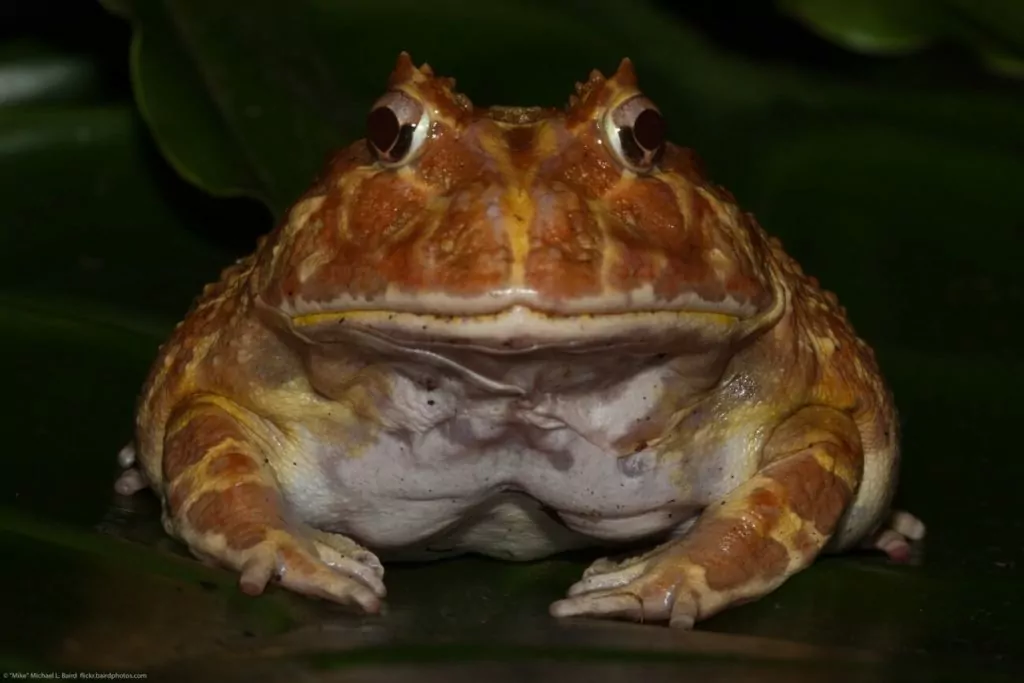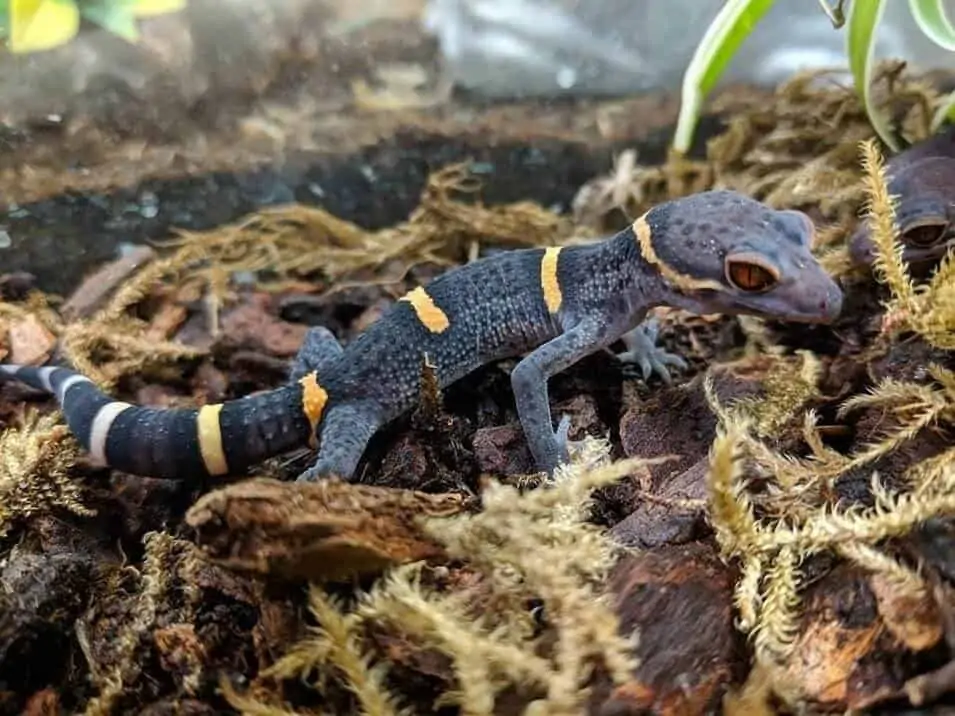Caiman lizards are a beautiful and unique reptile that can make great pets for experienced owners. There really isn’t anything like them!
But like we said, owning one of these lizards is something that should only be considered by expert owners. Caring for them isn’t easy.
This guide covers the essential elements of caiman lizard care. Habitat setup, size, lifespan, diet, and enclosure info are all included (plus some helpful extra facts).
Table of Contents
Species Summary
The caiman lizard (Dracaena guianensis) is native to South American countries such as Brazil, Ecuador, Colombia and Peru. They seem to divide their time between the water and the trees and can be seen perched on branches hanging over the water.
This gorgeous lizard was once hunted for its skin, but due to protection measures, its numbers in the wild are increasing!
It’s worth pointing out that taking care of a caiman lizard demands a lot of time, effort and a certain amount of expertise. This lizard is not for anyone without years of advanced reptile care experience.
Appearance & Colors
Even though the caiman lizard has some features that are similar to the crocodilian caiman, it is not the same thing at all.
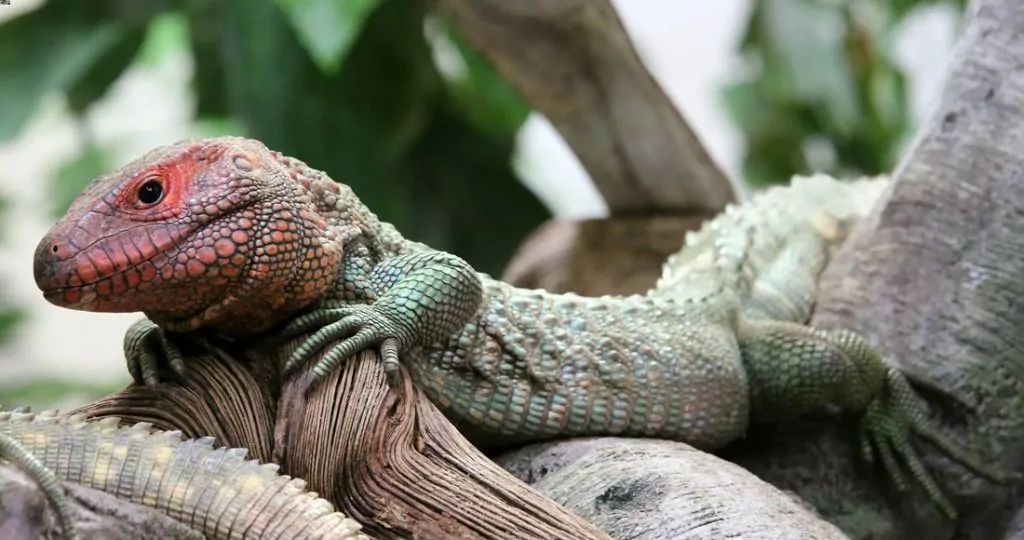
Yes, the caiman lizard has very heavy, bony scales like the other caiman, but that is where the resemblance ends.
The caiman lizard has a body that is a lovely shade of bright green. The head, usually an orange or red color, is bulky and displays a powerful jaw. The rest of the body may show yellow stripes or dots, and the long and strong tail is almost always a plain brown.
Average Caiman Lizard Size
The average caiman lizard size is around five feet in length for males, and four feet in length for females. This measurement includes their tail.
As you can tell, their size when fully grown is rather large compared to many of the other popular pet lizards. Before you opt to care for a caiman lizard, please take the potential size into consideration.
Lifespan
The lifespan of a caiman lizard can be up to ten years in captivity. This number depends greatly on proper care, healthy conditions and good health.
Expert Tip: Purchasing your caiman lizard from a reputable seller is another way to increase the chance of these reptiles enjoying a long and healthy life.
Caiman Lizard Care
For many reasons, caiman lizard care should only be attempted by very capable and experienced reptile caretakers.
First of all, their immense size and penchant for climbing makes a very large enclosure absolutely necessary. This is something that not everyone is able to provide, and requires a bit more work to set up.
Caiman lizards also have very specific water, humidity, temperature and lighting requirements, and their diet is quite specific.
While not overly aggressive, this pet lizard has very strong jaws and a strong tail that can and will be used against you if it feels scared or threatened.
Enclosure Size
You’ll need to realize right off the bat that any enclosure you build for your caiman is going to be very big. Caimans can grow to be five feet long, and they love to climb, so they require a roomy, open living space.
While young caimans can start off in standard glass tanks, adults must be housed in large, open enclosures that are often designed and built by the caretaker.
The absolute minimum enclosure size for an adult caiman lizard is 6 x 3 x 4 feet. If you have the room and the means to make the enclosure bigger, that is even better.
Expert Tip: Caimans need a big water source, tall, sturdy branches for climbing and plenty of places to hide. Making the biggest enclosure you can will allow your caiman to have a comfortable and familiar living space.
Habitat Setup
Picking a good substrate is going to be very important if you want to provide them with the right habitat setup. Not only does it help to trap moisture, but it gives your caiman lizard a place to dig and explore.
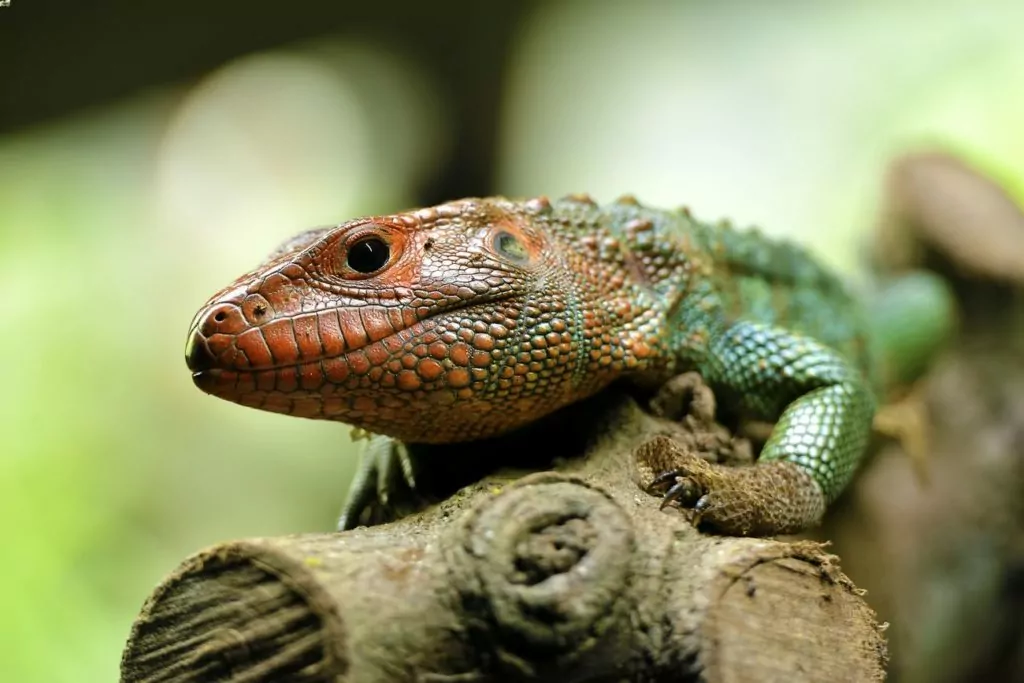
You’ll want to choose one that stays moist but doesn’t get soaking wet. Cypress mulch combined with soil and sand works pretty well.
To create a natural look to the enclosure, it’s nice to add live plants, artificial plants or a combination of both. Plants look great, and they give your caiman a place to hide and cool down.
Because caiman lizards are big climbers, a nice selection of sturdy branches, pieces of wood or sturdy benches will make your lizard very happy. Don’t forget to add reptile hides on both sides of the enclosure.
Temperature & Lighting
The trick to a good enclosure is to get the environment as close as possible to the caiman’s natural habitat. For your caiman to thrive, your setup will need to incorporate the elements of temperature and lighting.
Creating a temperature gradient within the enclosure is very important. Here are the temperature ranges to know:
- Designate one side of the enclosure as a basking area, and keep it between 100°F and 105°F.
- The rest of the enclosure, including the cooler side should remain between 80°F and 90°F.
- It’s perfectly fine if the nighttime temperature dips down to 75°F or so.
To create this gradient, most people use something like a halogen spot lamp that is designed for large reptile enclosures. Floodlights can be used as well, but the halogen lamp seems to work just fine.
Whilst the halogen lamp provides heat and basking light, you’re going to have to also have some kind of supplemental UVB and UVA lighting. This extra lighting will help to provide your caiman the vitamin D3 it needs for metabolism and general health.
A full-spectrum fluorescent light is suggested. Use a 12 hours on, 12 hours off schedule for best results.
Humidity
Humidity is a part of caiman lizard care that you need to take very seriously. Because these reptiles come from a lush, tropical environment, you’ll need to figure out how to create a reasonably similar atmosphere within your caiman’s enclosure.
The humidity level needs to be at a consistent 60 to 80 percent. Make sure to carefully monitor this with an accurate hygrometer.
This can get a bit tricky because you can’t house adult caimans in a standard glass enclosure. They need to be in a very large, specialized enclosure that will most likely have open sides. So how do you maintain the right level of humidity in an open-style enclosure?
The easiest way is to use an automatic mister. Once you get it where you want it, just set the timer, turn it on, and it will do the work for you. While these types of misting machines work well, you will probably have to do a little extra hand misting to keep the humidity at the perfect level. Use a hygrometer to monitor levels.
Expert Tip: Other humidity boosters include lots of plants, a really good substrate and a large water source.
Water
A large, clean water source is a very important aspect of any caiman lizard enclosure setup. It needs to be big enough and deep enough for your pet to be completely immersed and swim a bit!
You can use a plastic bin or any large plastic receptacle as your water source. You’ll know that you got it right if your caiman seems happy with it.
Whatever you decide to put the water in, it’s always going to end up being a mess. Keeping the water source clean is a big part of caiman lizard care, and it takes lots of work.
Expert Tip: You can certainly use a filter system, and it’ll help with some of the maintenance. However, there is no getting around the fact that you will have to change out the water many times a week, even with a filter in place.
The amount of work this entails is something to really consider before you take on the role of caiman caretaker.
Food & Diet
In the wild, a caiman lizard has a diet that consists mostly of aquatic snails. Since it’s not really possible to provide your caiman with this exact kind of snail, you will have to provide an acceptable canned substitute.
There are plenty of good reptile-friendly canned snails, and caiman lizards are not opposed to eating other things like canned shrimp, canned crickets or canned superworms. Because the caiman is related to the tegu, it will even eat canned tegu food!
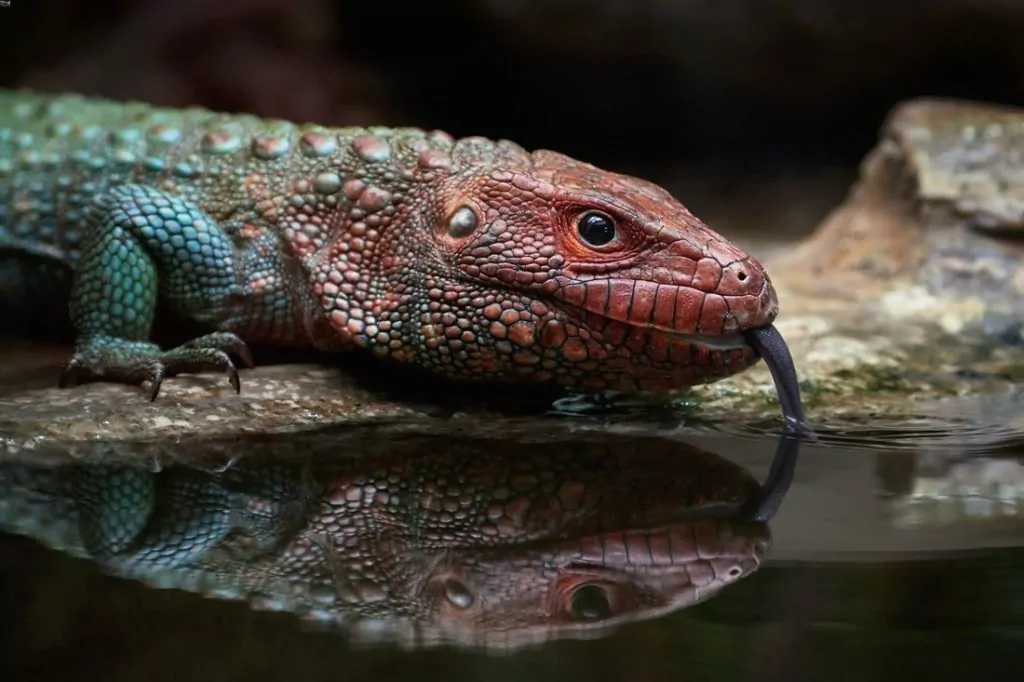
It’s a good idea to offer your caiman some nice tropical fruits like bananas, mangoes or papayas. They really love fruit, and they will get some extra vitamins at the same time.
As far as a feeding schedule goes, they do very well with being fed their canned items every other day. Fruit can be given once or twice a week. Of course, every caiman is different, so you will probably have to play around with the amounts and feeding schedule a bit. However, be careful not to overfeed your caiman.
To ensure that your lizard is getting the maximum amount of nutrition from its food, we suggest dusting their food with a calcium and vitamin supplement powder at least once a week.
Potential Health Issues
All in all, caiman lizards are known to be pretty healthy. However, there are a few health issues that can become serious if not dealt with right away.
Internal parasites are a real problem for reptiles, and caiman lizards are no exception. For the overall health of your caiman, it is really very important to catch any parasite issue right away before it gets out of control.
Expert Tip: Before you bring a new caiman home, make sure that you take it to a veterinarian for a fecal test. You will need to have a fecal test done at least once a year after that.
Caimans can have problems shedding, so keeping plenty of fresh water available and having the proper level of humidity within the enclosure is very important.
Respiratory infections can become very serious in no time. If your lizard stops eating, is acting sluggish, shows mouth breathing or has lots of mucus, you’ll need to get it medical attention right away. These are all signs of a respiratory infection, and chances are that your caiman will require a dose of antibiotics.
A clean environment, the right humidity and a nutritious diet can all help prevent one of these infections.
Behavior & Temperament
Caiman lizards are not known for aggression or bad behavior, but they still have the potential to bite or attack if they feel scared or threatened. In general though, they have a pretty nice temperament and can be trained to be more receptive to being around their owners.
They seem to be happiest when they are either soaking in their water source, hanging out in branches for some basking time or digging around in the substrate.
Handling Them
With a good set up and routine, you shouldn’t really have to handle your caiman lizard at all. Despite its fairly even temperament, this is a reptile that requires very expert knowledge, and handling it can be dangerous. It can inflict a very painful bite, so leaving it alone is highly recommended.
Feeding time can be rather tricky due to their feeding response. However, with time, training and patience, you can train your caiman to wait until the food is put safely in place.
These highly intelligent lizards are beautiful and fun to watch, but they are best left alone to enjoy their environment.
Conclusion
As you can see, caiman lizard care should be reserved for experienced owners only. Their size and unique requirements makes them quite a handful at times!
But if you’re an expert and are up to the challenge, we think owning one of these reptiles as a pet can be incredibly rewarding.
Let us know if you have any other questions about these lizards. We’re always happy to help!

